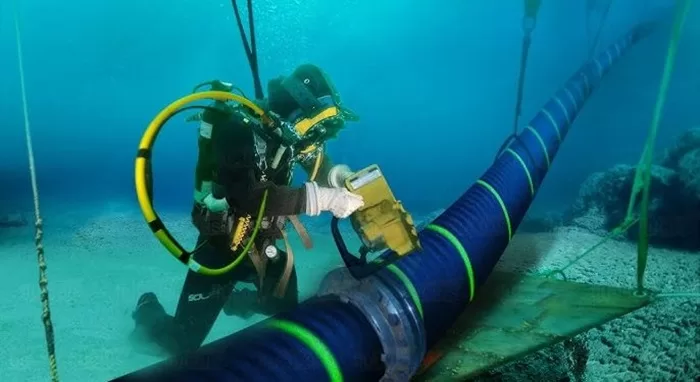A submarine internet cable, also known as a submarine communication cable, is a critical piece of infrastructure that enables global internet connectivity. These cables carry vast amounts of digital information across oceans, linking continents and supporting modern communication, business, and technology worldwide.
What is a Submarine Internet Cable?
Submarine internet cables are fiber-optic cables laid on the seabed to transmit data over long distances. Unlike satellite connections, which have higher latency and limited bandwidth, submarine cables provide fast, reliable, and high-capacity communication. They form the backbone of the global internet, handling more than 95% of international data traffic.
Modern submarine cables consist of optical fibers protected by layers of steel, plastic, and waterproof coatings, making them resilient to harsh ocean conditions such as high pressure, strong currents, and marine life.
How Submarine Cables Work
Submarine cables transmit data as light pulses through optical fibers, allowing for extremely fast communication across thousands of kilometers. At landing stations, these light signals are converted into electrical signals for distribution across terrestrial networks.
To maintain signal strength over long distances, repeaters are installed along the cable every 50–100 kilometers. These devices amplify the optical signals to prevent data loss. Submarine cables are capable of handling terabits of data per second, supporting high-speed internet, cloud computing, video streaming, and international communications.
Importance of Submarine Cables
Submarine internet cables are essential for global connectivity. They enable seamless communication, international trade, online banking, and access to cloud-based services. Without them, global internet traffic would rely heavily on slower and less reliable satellite connections.
These cables also play a strategic role in national security, finance, and international collaboration, as any disruption can have widespread economic and social impacts.
Challenges and Security
Laying and maintaining submarine cables is a complex and expensive process. Challenges include oceanic pressure, natural disasters, and accidental damage by ships or fishing activity. Security is also crucial, as cables are vulnerable to tampering or cyber threats. International regulations and cooperation help ensure their protection and continuous operation.
The submarine internet cable is the silent backbone of the modern digital world, connecting continents and supporting the global economy. As demand for high-speed internet grows, these cables will continue to be essential for communication, innovation, and worldwide connectivity.
Advantage of Crypto Market on US Tariff War
![]()





